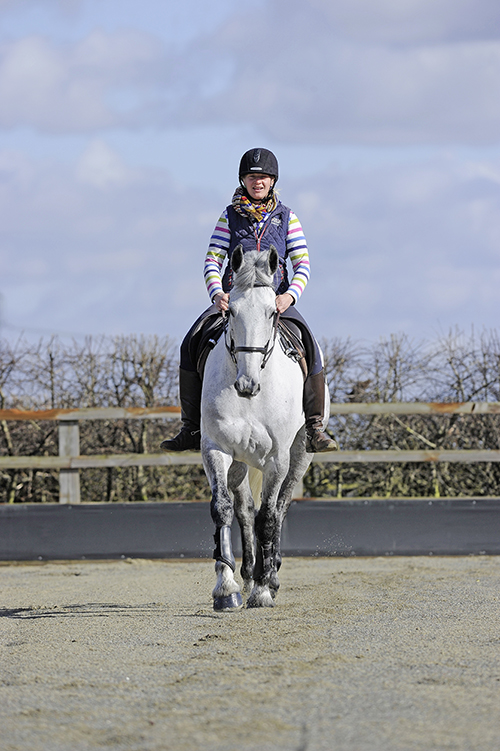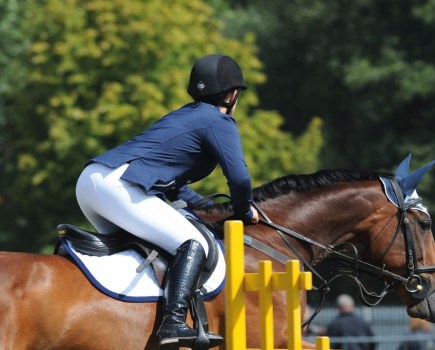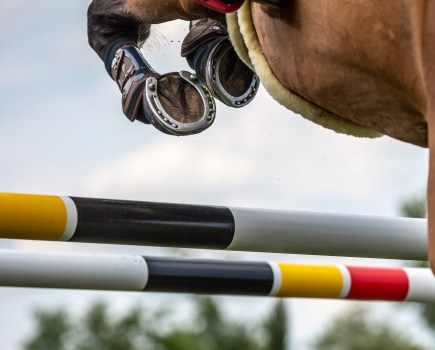Riding your horse in balance is essential for safe, effective riding and jumping. Event rider Paul Tapner shares his simple steps to a balanced jumping position.
Balance is the most important aspect of riding and the thing that keeps you where you want to be – in the saddle. Without it you’re going to find whatever you do with your horse difficult, whether you jump or not, and let’s face it, none of us like falling off. Spending a bit of time working on your balance in the saddle has a number of benefits – it’ll boost your confidence, make riding much more fun and, importantly, safer too. To help you on your way to perfecting your balance and position follow Paul’s four-point plan for a balanced jumping seat.
Perfect your position in the saddle
Start by checking you’re sitting evenly in the saddle. To do this, in halt take your feet out of your stirrups and see if you can feel if you’re sitting equally on both seat bones. Most of us will have a tendency to lean slightly to the left or right. To see just how much this unevenness can affect your horse, in a safe environment spend a few moments shifting your weight to the left and then the right as you walk or trot around and notice what this unevenness does to your horse as you shift your weight. You should feel him struggling to stay straight and he’ll tend to drift in the direction you’re leaning.
Another good check is to trot without stirrups towards a camera, arena mirror, or your trainer to see if you’re sitting straight.
Finally, keep a regular check on your stirrup leathers. Over time they can stretch, so don’t think by riding with your leathers on the same hole both sides that you’re sitting level.
Check your stirrup length
The subject of stirrup length, especially for cross-country, is always a hot topic, but how long or short you choose is mainly down to what you find most comfortable. What’s essential is that you can maintain a secure lower leg position as this plays a key role in keeping you balanced and safe when you’re jumping or cantering over varying terrain. You also need to have a bend in your hip, knee and ankle so they can do their job of acting as shock absorbers.
To see if you’re riding at a good length, stand up in your stirrups and see what happens to your lower leg. If it stays in the correct position and you don’t feel it’s slipping back or forwards, then you’re probably at a good length for jumping.
Improve your lower leg position
A good, secure lower leg position will allow you to get up and out of the saddle between fences. Practise cantering around the arena with your seat out of the saddle, making sure you stay still from the waist down. You should be able to move your upper body forwards and back without your horse’s canter rhythm changing.
Check your seat
When you’re riding cross-country you’ll need to ride in two different seat positions.
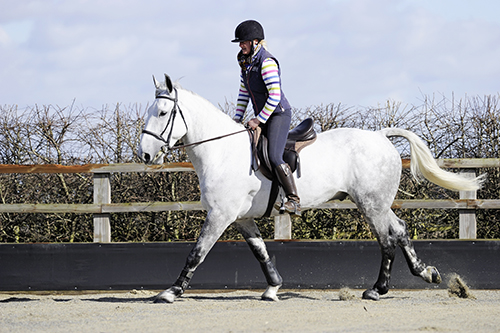
Two-point seat
Two-point seat
This position is when you take your seat out of the saddle in between fences, so your left leg and right leg are the points of contact with your horse. You often hear this referred to as taking weight off your horse’s back, but this position doesn’t instantly make you lighter. Your horse still has to carry you and by taking your bottom out of the saddle you haven’t suddenly lost pounds; you still weigh the same. You do need to be able to keep your balance in this position to help your horse, and your knees and ankles should act as shock absorbers to help you move with your horse.
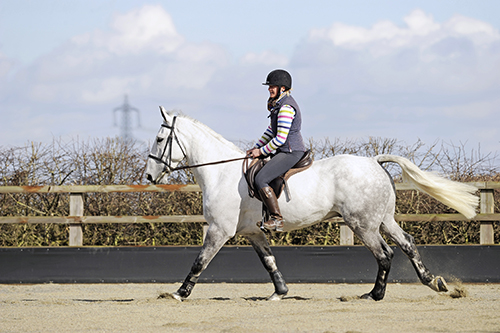
Three-point seat
Three-point seat
The three points of contact here are your seat, your left leg and your right leg. You’ll ride in this position as you approach each fence so you’re nice and secure just in case your horse decides to run out or refuse.
You need to be able to switch between these two positions and your horse should stay in the same rhythm. You can practise moving from a three-point seat to a two- point seat in the arena or out hacking, all the while focusing on keeping that all-important lower leg position still.
Riding cross-country is all about being able to react quickly to different situations, and having the ability to engage your core and stay balanced meaning that your seat is more secure and you’re less likely to fall off. Ultimately, that’s what we all want.

